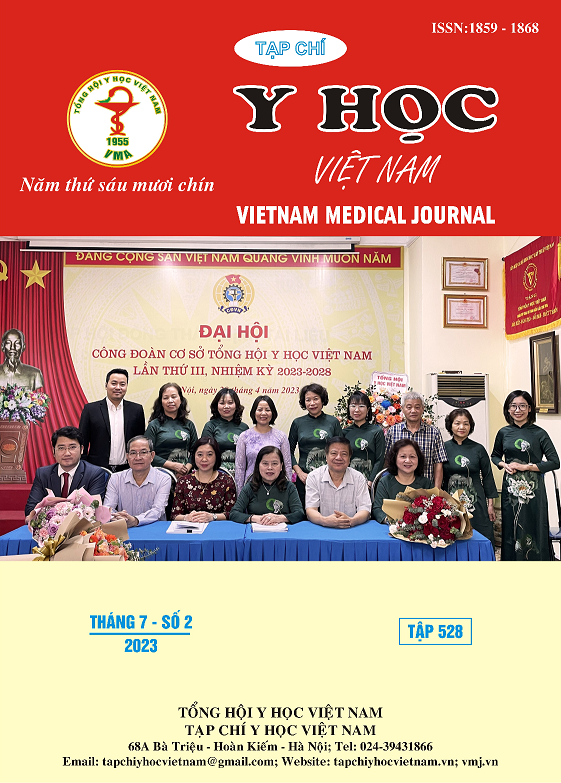RISK FACTORS OF PNEUMOCONIOSES OF COAL WORKERS AT VANG DANH JOINT- STOCK COMPANY, 2021
Main Article Content
Abstract
Objectives: A cross-sectional study was carried out in this study to determine some factors related to anthrax at Vang Danh Coal Joint Stock Company, Quang Ninh, in 2021. Method: A cross-sectional survey of all employees at Vang Danh Coal Joint Stock Company, Quang Ninh eligible to participate in the study was conducted from October 2020 to October 31, 2021. Results: The results show that people with working age of more than 5 years but less than 10 years are 2,634 times more likely to have anthrax than those with less than 5 years of seniority (95% CI: 0.293-23,664; χ2=156.715, p. <0.001). There was no difference in the risk of anthrax between men and women (p > 0.05). Compared with workers exposed to cumulative total particulate matter concentrations < 4600 particles, subjects exposed to cumulative total particulate matter concentrations of 4600- 8689 particles had a 14,196 times higher risk of coal dust pneumoconiosis (95 %CI: 2.931- 68.753; p=0.001). Workers exposed to cumulative respiratory particle dust concentrations of 9757 particles were 1,044 times more likely to develop aerosol dust than subjects exposed to cumulative respiratory particulate dust concentrations of <3160 particles (95% CI: 0.306-3.556), but this difference is not statistically significant (p= 0.072>0.05). Conclusions: In this study, there was no difference in the risk of coal dust lung disease between men and women, between smokers and non-smokers. The higher the concentration of cumulative total particulate dust, the grea
Article Details
Keywords
Bụi phổi than, nguy cơ, công ty cổ phần than Vàng Danh.
References
2. Cohen RAC, Patel A, Green FHY. Lung Disease Caused by Exposure to Coal Mine and Silica Dust. Semin Respir Crit Care Med. 2008;29(6):651-661. doi:10.1055/s-0028-1101275
3. Nguyen AL, Matsuda S (1998), "Pneumoconiosis problem among the Vietnamese coal mine workers", J uoeh. 20(4), 353-360.
4. Carlos Humberto Torres Rey 1, Milciades Ibañez Pinilla 1, Leonardo Briceño Ayala 1, Diana Milena Checa Guerrero 2, Gloria Morgan Torres 3, Helena Groot de Restrepo 4, Marcela Varona Uribe (2015), "Underground coal mining: relationship between coal dust levels and pneumoconiosis, in two regions of Colombia, 2014". Biomed Res Int. 2015;2015:647878.
5. Laney SA, Weissman DN (2014) “Respiratory diseases caused by coal mine dust”. J Occup Environ Med, 56 (Suppl. 10): 18-22.
6. Suarthana E, Laney SA, Storey E and et al (2011), “AttfieldCoal workers' pneumoconiosis in the United States: regional differences 40 years after implementation of the 1969 Federal Coal Mine Health and Safety Act”. Occup Environ Med, 68 (2): 908-913.
7. Laney AS, Attfield MD (2010) “Coal workers' pneumoconiosis and progressive massive fibrosis are increasingly more prevalent among workers in small underground coal mines in the United States”. Occup Environ Med, 67 (3): 428-431.
8. Qing XQ, Xiang KC, Hai YL and et al (2016), “Relationship of cumulative dust exposure dose and cumulative abnormal rate of pulmonary function in coal mixture workers”. The Kaohsiung Journal of Medical Sciences, 32 (1): 44-49


